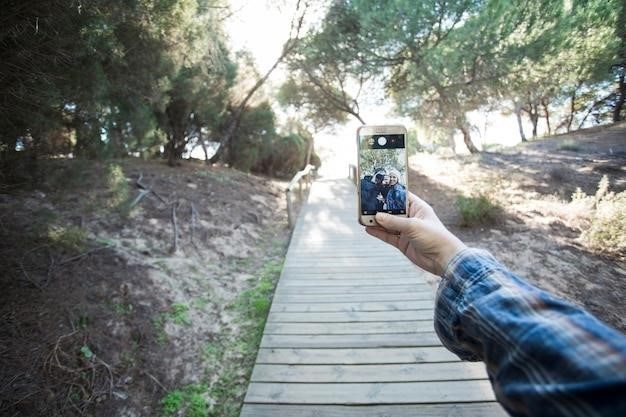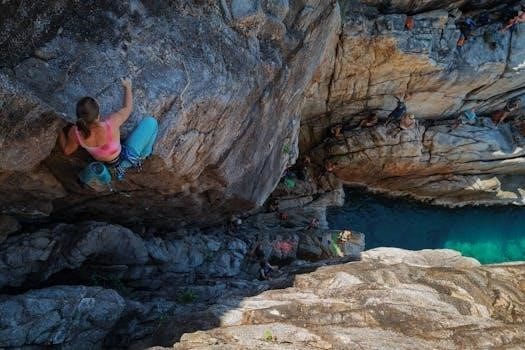GardePro A3S Trail Camera⁚ A Comprehensive Guide
This guide provides a comprehensive overview of the GardePro A3S trail camera‚ covering its features‚ setup‚ operation‚ and troubleshooting. Whether you’re a seasoned hunter‚ a wildlife enthusiast‚ or simply curious about this popular device‚ this guide will equip you with the knowledge you need to maximize your experience with the GardePro A3S.
Introduction
The GardePro A3S trail camera is a versatile and user-friendly device designed to capture images and videos of wildlife‚ providing valuable insights into animal activity. This camera is known for its high-resolution images‚ reliable motion detection‚ and long battery life. The A3S offers features such as 1296p video recording‚ 100ft no-glow night vision‚ and a fast trigger speed‚ making it an excellent choice for both casual and serious wildlife observers.
This manual aims to guide you through every aspect of the GardePro A3S‚ from initial setup to advanced usage‚ ensuring you get the most out of your camera. It covers essential topics like battery installation‚ SD card formatting‚ and basic operation. Furthermore‚ it delves into advanced features such as time lapse photography‚ remote control options‚ and troubleshooting common issues.
1.1. About the Camera
The GardePro A3S trail camera is a compact and powerful device designed to capture wildlife activity in a variety of environments. It features a high-resolution sensor capable of capturing images up to 12MP and videos in 1296p resolution‚ ensuring crisp and detailed recordings. The A3S utilizes a highly sensitive Passive Infra-Red (PIR) motion sensor to detect movement‚ triggering image capture or video recording.
One of the key advantages of the A3S is its 100ft no-glow infrared night vision. This allows the camera to capture clear images and videos even in complete darkness‚ without disturbing wildlife with a visible light source. The A3S also boasts a fast trigger speed of 0.1 seconds‚ ensuring you don’t miss any fleeting moments of wildlife activity.
1.2. Key Features
The GardePro A3S trail camera offers a wide range of features to enhance your wildlife monitoring experience. Here are some of its notable capabilities⁚
- High-Resolution Imaging⁚ Capture detailed images with a resolution of up to 12MP and record high-definition videos in 1296p.
- Fast Trigger Speed⁚ The A3S boasts a lightning-fast trigger speed of 0.1 seconds‚ ensuring that you don’t miss any fleeting moments of wildlife activity.
- Advanced Night Vision⁚ Equipped with 100ft no-glow infrared night vision‚ the A3S captures clear images and videos even in complete darkness‚ without disturbing wildlife with a visible light source.
- Time Lapse Photography⁚ Capture the passage of time with the A3S’s time-lapse photography feature‚ allowing you to create compelling visual sequences of wildlife behavior over extended periods.
- Durable Construction⁚ The A3S is built to withstand the elements‚ featuring a weatherproof and shockproof design‚ ensuring its reliability in various outdoor conditions.
Setting Up Your GardePro A3S
Setting up your GardePro A3S trail camera is a straightforward process. Follow these steps to get your camera ready for action⁚
- Locate the Battery Compartment⁚ Open the battery compartment on the back of the camera.
- Insert the Batteries⁚ Insert the required number of batteries‚ ensuring they are properly oriented according to the polarity markings inside the compartment.
- Secure the Battery Compartment⁚ Close and latch the battery compartment to ensure secure contact and prevent accidental opening.
- Insert the SD Card⁚ Open the SD card slot on the side of the camera. Insert a formatted SD card of appropriate capacity‚ ensuring it is securely inserted.
- Power On the Camera⁚ Locate the power switch on the side of the camera and slide it to the “ON” position.
- Initial Setup⁚ After powering on‚ the camera will display a series of settings and options. Use the navigation buttons to adjust settings such as date‚ time‚ and capture mode according to your preferences.
Once you’ve completed these steps‚ your GardePro A3S is ready to start capturing wildlife moments.
2.1. Battery Installation
The GardePro A3S trail camera typically requires 8 AA batteries for operation. Here’s how to install them correctly⁚
- Locate the Battery Compartment⁚ On the back of the camera‚ you’ll find a compartment labeled “Battery”. Open this compartment by sliding the latch or pressing the release button.
- Insert the Batteries⁚ Inside the compartment‚ you’ll see markings indicating the positive (+) and negative (-) terminals. Align the batteries accordingly‚ ensuring the positive end of each battery faces the positive marking.
- Secure the Battery Compartment⁚ Close the battery compartment and ensure it is securely latched or closed. This will make sure the batteries are in proper contact and prevent accidental opening.
It’s recommended to use high-quality alkaline batteries for optimal performance and longer battery life. You can also consider rechargeable batteries‚ especially if you plan to use the camera frequently.
2.2. SD Card Formatting
Before using your GardePro A3S trail camera for the first time‚ it’s crucial to format the SD card. Formatting ensures the card is properly prepared for the camera’s file system‚ preventing potential issues with image and video storage. Here’s how to format the SD card⁚
- Insert the SD Card⁚ Locate the SD card slot on the side or bottom of the camera. Carefully insert the SD card‚ ensuring it’s properly seated.
- Access the Menu⁚ Turn on the camera and navigate to the “Settings” or “Menu” option. The exact steps may vary slightly depending on the camera model.
- Select “Format SD Card”⁚ In the settings menu‚ look for an option labeled “Format SD Card” or something similar. Select this option to initiate the formatting process.
- Confirm Formatting⁚ The camera will prompt you to confirm the formatting process. Select “Yes” or “Confirm” to proceed. This will erase all existing data on the SD card.
Once formatting is complete‚ the SD card is ready for capturing images and videos. It’s a good practice to format the SD card periodically to maintain optimal performance and ensure sufficient storage space.

2.3. Initial Setup and Activation
After installing the batteries and formatting the SD card‚ you’re ready to activate your GardePro A3S. This process is straightforward‚ but a few steps are essential for ensuring the camera functions correctly. Follow these instructions⁚
- Turn on the Camera⁚ Locate the power switch on the camera and slide it to the “ON” position. The camera will power up‚ and you’ll see the screen light up.
- Wait for Initialization⁚ The camera will go through a brief initialization process‚ which involves displaying numbers on the screen that will count down to zero. This indicates the camera is booting up and preparing for operation.
- Blue Screen and Activation⁚ Once the numbers reach zero‚ the screen will briefly turn blue. After this‚ the screen will turn black. This signifies that the GardePro A3S is fully activated and ready to capture images and videos.
- Close the Cover⁚ Ensure the camera cover is securely closed to protect the lens and prevent accidental activation.
Your GardePro A3S is now set up and ready to be placed in your desired location. You can adjust the settings for capturing images and videos according to your preferences.
Using the Camera
The GardePro A3S is designed for effortless operation‚ allowing you to capture images and videos with minimal effort. The camera’s intuitive controls make it easy to navigate the settings and adjust them to suit your needs. To start using your camera‚ follow these simple steps⁚
- Select Your Mode⁚ The GardePro A3S typically offers two primary modes of operation⁚ “Photo” and “Video.” Choose the mode that aligns with your desired output. Use the up or down buttons to switch between these modes.
- Position and Secure⁚ Place the camera strategically in your chosen location. Make sure the camera is securely mounted to prevent accidental movement or tampering. The camera’s PIR sensor will detect movement within its detection range.
- Wait and Capture⁚ Once positioned‚ the camera will automatically activate and capture images or videos when motion is detected within its range. The trigger speed is usually very fast‚ ensuring you don’t miss any action.
The GardePro A3S will continue to capture images and videos until the SD card is full or the batteries are depleted.
3.1. Modes of Operation
The GardePro A3S offers various modes of operation to cater to different needs. Here are the most common modes you’ll likely encounter⁚
- Photo Mode⁚ This mode is designed for capturing still images. The camera will take a single picture when motion is detected. Photo mode allows you to capture clear‚ high-resolution images of wildlife‚ activity‚ or any other subject of interest. Many cameras offer various resolutions‚ such as 12MP or even higher.
- Video Mode⁚ Video mode enables the camera to record short video clips when motion is detected. This mode is ideal for capturing the movement of animals or any other dynamic events. The video quality can vary depending on the camera’s specifications‚ with options like 1080p resolution or even higher. The camera might also support audio recording for a more immersive experience.
- Time Lapse Mode⁚ This mode is a specialized feature that allows the camera to capture a series of images at set intervals. These images can then be combined to create a time-lapse video‚ showcasing a sequence of events over a longer period. Time-lapse mode is useful for documenting changes in the environment‚ animal behavior‚ or plant growth.
The exact modes available on your specific GardePro A3S model may differ‚ so refer to the user manual for detailed information on the available modes and their settings.
3.2. Taking Photos and Videos
The GardePro A3S is designed to be user-friendly‚ but it’s important to understand the basic steps for taking photos and videos to ensure optimal results. Here’s a general guide⁚
- Choose the Mode⁚ First‚ select the desired mode (Photo or Video) using the camera’s menu. Ensure the camera is properly positioned and aimed towards the area you want to monitor.
- Set the Trigger Sensitivity⁚ Adjust the trigger sensitivity to optimize the camera’s response to movement. A higher sensitivity will trigger the camera for even slight movements‚ while a lower sensitivity requires more significant motion. This setting is crucial for minimizing false triggers and capturing the desired events.
- Adjust Other Settings⁚ Explore additional settings to fine-tune your experience‚ such as the photo resolution‚ video quality‚ time-lapse intervals‚ and date and time stamps. These options allow you to personalize your recordings and optimize the camera for your specific needs.
- Wait for the Action⁚ Once the camera is set up‚ simply wait for the desired activity to occur. The camera will automatically detect movement and capture photos or videos. You can check the camera’s display or the SD card later to review your recordings.
Remember‚ the specific steps and settings may vary slightly depending on the GardePro A3S model you have. Always refer to the user manual for precise instructions and detailed explanations.
3.3. Viewing Images and Videos
After capturing photos and videos‚ you’ll want to review them to see what the camera has recorded. This can be done directly on the camera’s built-in display or by transferring the files to your computer. Here’s how to view your recordings⁚
- On-Camera Display⁚ The GardePro A3S usually features a small LCD screen for viewing captured images and videos. Navigate through the menus to find the “Playback” or “Review” option. You can then scroll through the files and view them individually.
- Transfer to Computer⁚ For a larger and more detailed viewing experience‚ transfer the files from the camera’s SD card to your computer. Remove the SD card from the camera and insert it into a card reader connected to your computer. Access the files as you would any other SD card data. You can then view the images and videos using a standard image viewer or video player on your computer.
- Use the GardePro App (if applicable)⁚ Some GardePro A3S models may support a dedicated mobile app that allows you to connect the camera to your smartphone or tablet. This app can provide convenient access to view your recordings‚ manage settings‚ and even remotely control the camera.
Remember to back up your recordings regularly to avoid losing valuable data. You can copy the files to a separate storage device or cloud storage service for safekeeping.
Advanced Features
Beyond basic photo and video capture‚ the GardePro A3S offers several advanced features that enhance its functionality and expand its capabilities. These features allow you to capture unique perspectives and gather valuable information about wildlife behavior and activity.
- Time Lapse Photography⁚ The GardePro A3S allows you to capture time-lapse sequences‚ which compress extended periods of time into short‚ dynamic videos. This feature is particularly useful for observing subtle changes in wildlife behavior or the progression of natural events over time.
- Remote Control and Connectivity⁚ Some models of the GardePro A3S may offer remote control capabilities via a mobile app or other connectivity options. This allows you to access and manage the camera remotely‚ adjust settings‚ view recordings‚ and even trigger photos and videos from a distance.
To learn more about the specific advanced features available on your GardePro A3S model‚ refer to the user manual or contact GardePro support for detailed information and instructions.

4.1. Time Lapse Photography
The GardePro A3S’s Time Lapse Photography feature allows you to capture a series of images at set intervals‚ which can be compiled into a dynamic video showcasing the progression of events over time. This feature is particularly useful for observing subtle changes in wildlife behavior‚ plant growth‚ or the movement of clouds across the sky.
To utilize Time Lapse Photography‚ access the camera’s settings menu and locate the Time Lapse option. You’ll be able to configure the interval between captures‚ the total duration of the sequence‚ and the desired resolution of the resulting video.
The GardePro A3S’s Time Lapse mode offers a unique perspective for capturing captivating footage. It allows you to document and share natural processes that might otherwise be missed or difficult to observe in real-time.
4.2. Remote Control and Connectivity
The GardePro A3S trail camera offers limited remote control and connectivity options‚ primarily focusing on basic functions. While it lacks built-in cellular or Wi-Fi connectivity for real-time image viewing or remote control‚ you can still manage certain settings through a wired connection.
The camera includes a Mini USB port for connecting to a computer. Once connected‚ you can download images and videos‚ format the SD card‚ and adjust some basic settings like time‚ date‚ and image quality. However‚ remote access to live feeds or advanced control options is not available with this camera.
For those seeking more advanced remote control and connectivity‚ it’s recommended to explore other models in the GardePro lineup or consider alternative trail cameras with cellular or Wi-Fi capabilities.





